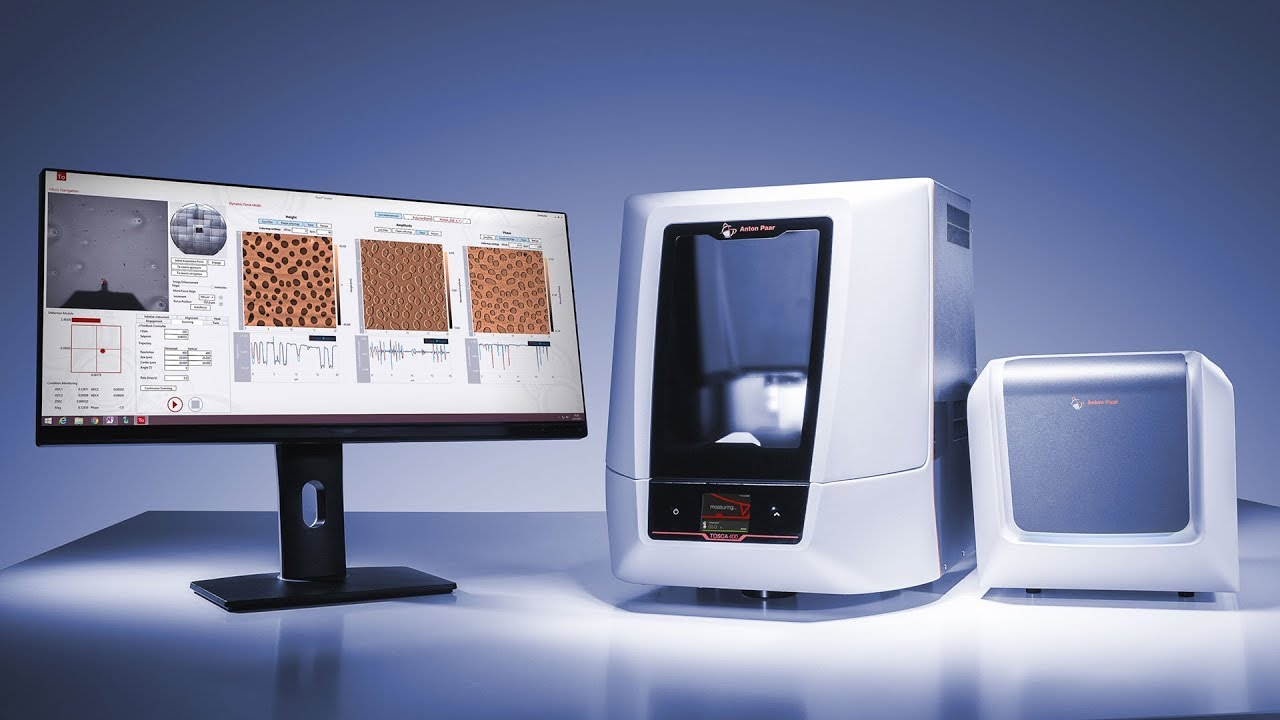Atomic Force Microscopy
Atomic Force Microscope, complete system

Atomic force microscopy (AFM) is an influential surface analysis technique used for micro/nanostructured coatings. This flexible technique can be used to obtain high-resolution nanoscale images and study local sites in air (conventional AFM) or liquid (electrochemical AFM) surroundings.
AFM is used to measure and localize many different forces, including adhesion strength, magnetic forces and mechanical properties. AFM consists of a sharp tip that is approximately 10 to 20 nm in diameter, which is attached to a cantilever. AFM tips and cantilevers are micro-fabricated from Si or Si 3N4. The tip moves in response to tip–surface interactions, and this movement is measured by focusing a laser beam with a photodiode.
An AFM is operated in two basic modes, such as contact and tapping modes. In the contact mode, the AFM tip is in continuous contact with the surface. In contrast, in the tapping mode, the AFM cantilever is vibrated above the sample surface such that the tip is only in intermittent contact with the surface. This process helps to reduce shear forces associated with the tip movement. The tapping mode is the recommended mode that is commonly used for AFM imaging. The contact mode is only used for specific applications, such as force curve measurements. The AFM is used to image and manipulate atoms and structures on a variety of surfaces. The atom at the apex of the tip ‘senses’ individual atoms on the underlying surface when it forms incipient chemical bonds with each atom. Because these chemical interactions delicately alter the tip’s vibration frequency, they can be detected and mapped.